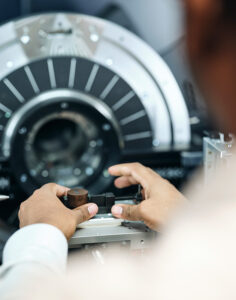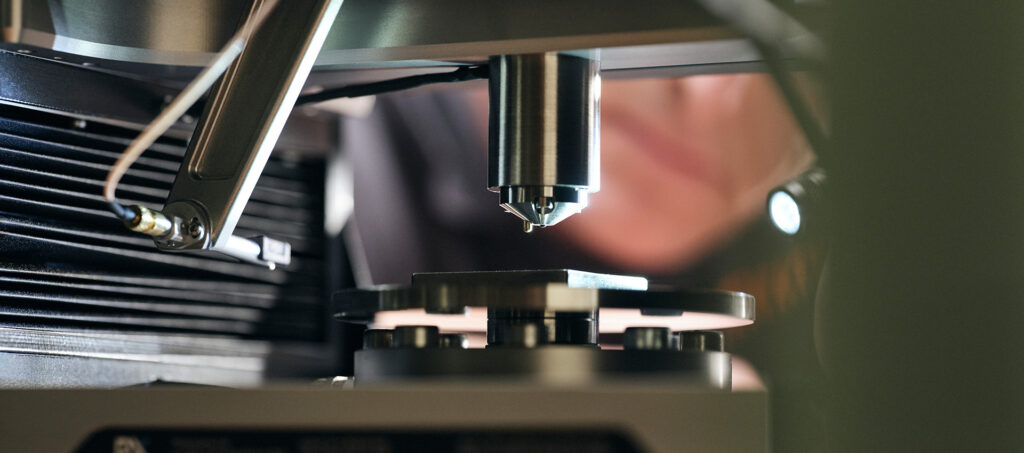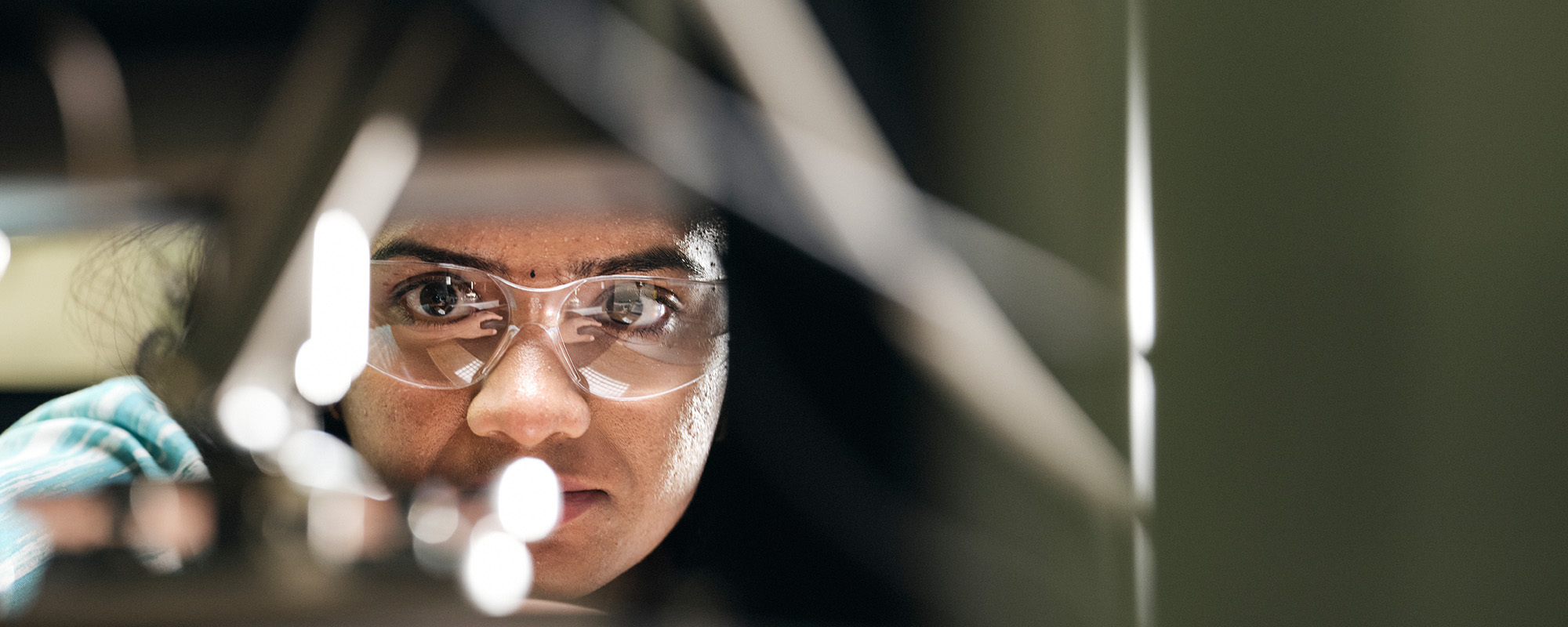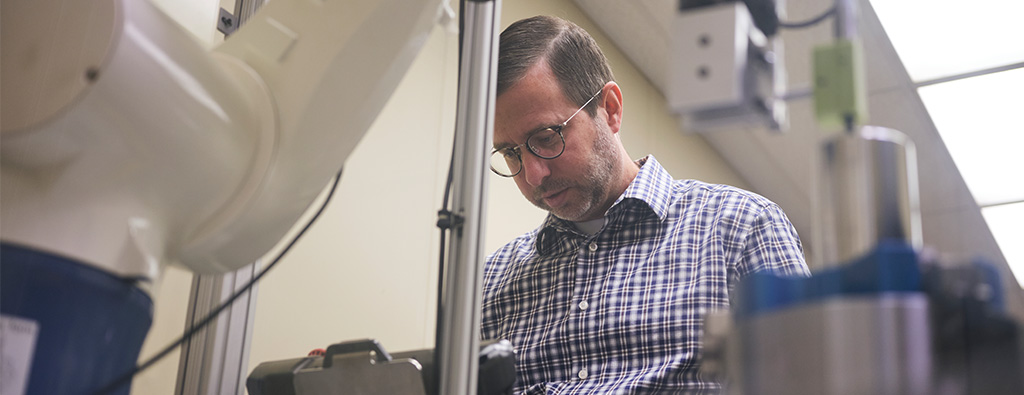Innovation
Proving It Out: Timken Testing Advances Product Innovation
 Innovation never stops. Right now, engineers across industries are devising new ways to improve aviation sustainability, optimize food production for a growing global population, and build even larger, more powerful wind turbines. These technologies have one thing in common: their success depends on engineered bearing solutions that can withstand unprecedented operating requirements.
Innovation never stops. Right now, engineers across industries are devising new ways to improve aviation sustainability, optimize food production for a growing global population, and build even larger, more powerful wind turbines. These technologies have one thing in common: their success depends on engineered bearing solutions that can withstand unprecedented operating requirements.
Timken product testing plays a crucial role in developing the next generation of industrial applications that keep the world in motion. Daniel McClelland, manager of bearing and seal testing, explains how the company’s global test capabilities inform, improve and validate the work of Timken application engineers and customers.
Q: How does Timken product testing support customer innovation, and what are your current capabilities?
McClelland: No new innovation can be introduced without first proving that it works. It’s our job to verify our engineered bearings meet customer expectations for efficiency, performance and service life in new applications. Our testing expertise spans decades and began when we started conducting regular quality audits for products made at every Timken facility. We still perform those audits, but our capabilities have evolved tremendously.
“Our testing expertise spans decades … We have more than 120 pieces of highly specialized lab equipment, with 95% of it designed and built by our own technical experts.”
Daniel McClelland
Manager of Bearing and Seal Testing
Today we have in-house capabilities in three test types. We do life testing that validates Timken load ratings and calibrates application bearing life prediction models, application testing that replicates how customers actually use our products, and seal testing that analyzes a seal’s ability to keep lubrication in and contaminants out of bearings. They all inform how we design and recommend future bearings.
Q: Why does Timken invest in in-house testing capabilities instead of relying on third party labs?
McClelland: We have more than 120 pieces of highly specialized lab equipment, with 95% of it designed and built by our own technical experts. This customization helps us to do more specific testing that accommodates our product designs. Because of our in-house knowledge, we can also modify test rigs and processes as needed to address unique customer requests. We recently conducted testing on specialty bearing housed units for industrial applications using modified automotive wheel bearing test equipment. It was an efficient solution, and we were able to get the results quickly for the customer.
Q: What new testing are you doing to stay ahead of evolving customer trends?
McClelland: One major trend is higher speed requirements for bearings, especially in aerospace applications and electric vehicles. Electric axles spin at much higher rates than those powered by internal combustion engines. We’ve developed high-speed testing that’s very unique to Timken and on the outer fringes of what our competitors may be capable of. Another trend we’re seeing is more rigorous anti-bacterial washdowns in food and beverage applications, which led us to build our own IP69k testing capabilities. IP69k is an international standard that indicates a product can withstand high-pressure, high-temperature washdowns without being damaged. Our IP69k test rig helped with the development of a new line of Timken sealed mounted bearings for food and beverage. While our products still need to be verified in a certified IP69k third-party lab, having this capability in-house substantially reduces our development time for these bearings.

Q: How do you elevate tried-and-true legacy testing capabilities to keep pace with today’s testing demands?
McClelland: It’s important to note that our testing investments are always driven by real-world industry needs. We’ve been doing vibration testing for decades for key markets. We recently acquired a new vibration test rig that allows us to run varying levels of input; our previous rig was fixed to one input level. The upgrade allows us to look at more operating challenges for seals in the field that could be related to vibration, and better diagnose the true root causes of those challenges.
We’re also seeing more requests for large-bore bearing validation testing in support of markets like wind energy, primary metals and large off-highway equipment. We’re doing significant subscale testing for wear right now, based on what we’ve learned from previous subscale tests. We’re also studying the lubricious attributes of coatings that could advance bearing technology for future wind applications.
Q: How do you see Timken testing advancing over the next 10 years?
McClelland: I think the diversity of products we test will change as Timken continues expanding our engineered bearings and industrial motion portfolio. Tests like vibration and IP69k are not limited to just bearings; we can modify mounting fixtures to accommodate just about anything. The amount of collaboration already taking place across acquisitions is huge, and will continue to grow in the future.
World-class Timken laboratories, prototype assets and capabilities drive our R&D initiatives and customer innovation. Learn more about the company’s investment in a full range of technical pursuits from tribology to simulation technology.
Last Updated: 2024/01/8
Published: 2024/01/3

